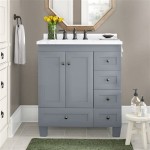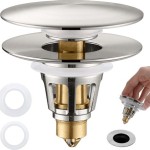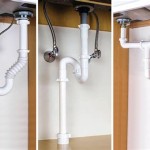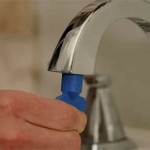Do I Need a Special Mirror For the Bathroom?
The question of whether a specialized mirror is required for a bathroom is more nuanced than a simple yes or no. While any mirror can technically be mounted in a bathroom, the conditions inherent to this environment demand consideration of factors such as durability, functionality, and specific needs. The decision ultimately hinges on individual preferences, budget, and the expected lifespan of the mirror.
Bathrooms are characterized primarily by high humidity and frequent temperature fluctuations. These conditions can wreak havoc on materials that are not properly suited for such an environment. Mirrors, in particular, are susceptible to damage from moisture, which can lead to desilvering (the blackening of the mirror backing), corrosion, and reduced reflectivity. Furthermore, the specific activities performed in a bathroom, such as shaving, applying makeup, or styling hair, might benefit from mirrors designed with specific features.
Considering Humidity and Moisture Resistance
The primary challenge facing mirrors in bathrooms is the high level of humidity. Standard mirrors, often coated with a thin layer of silver and protected by a backing paint, are vulnerable to moisture penetration. Over time, this moisture can corrode the silver layer, leading to unsightly black spots or a generally dull appearance. This process, known as desilvering, compromises the mirror's reflective qualities and aesthetic appeal.
Mirrors designed specifically for bathroom use often incorporate features to mitigate the effects of humidity. These may include thicker layers of protective paint, moisture-resistant sealants applied to the edges, and even coatings designed to repel water. Some manufacturers utilize copper-free silvering processes to minimize corrosion, as copper is particularly susceptible to oxidation in humid environments. Choosing a mirror with these protective measures can significantly extend its lifespan and maintain its clarity in a bathroom setting.
Another aspect to consider is the ventilation in the bathroom. A well-ventilated bathroom can significantly reduce the amount of moisture accumulating on surfaces, including mirrors. Implementing strategies such as using exhaust fans during and after showers can help minimize humidity levels and prolong the life of any mirror, regardless of its specialized features. However, even with adequate ventilation, a mirror designed for bathroom environments will generally offer greater protection against moisture damage.
Beyond the mirror itself, the method of installation also plays a crucial role in protecting against moisture. Using appropriate adhesives and sealants that are specifically designed for bathroom environments is essential. Improper installation can create pathways for moisture to seep behind the mirror, leading to corrosion and detachment. Consulting with a professional installer can ensure that the mirror is properly sealed and protected from water damage.
Evaluating Functional Needs and Desired Features
Beyond the basic function of reflection, mirrors in bathrooms can serve a variety of purposes. The specific needs of the user should be carefully considered when selecting a bathroom mirror. For example, individuals who frequently shave or apply makeup may benefit from a mirror with integrated lighting or magnification features. These features can enhance visibility and precision, making grooming tasks easier and more effective.
Mirrors with integrated lighting often feature LED bulbs, which are energy-efficient and provide bright, even illumination. The placement of the lights is also important; side lighting is generally preferred over top lighting, as it reduces shadows and provides a more natural-looking reflection. Some mirrors offer adjustable light settings, allowing users to customize the brightness and color temperature to suit their preferences. These features can be particularly useful for tasks that require accurate color perception, such as applying makeup.
Magnifying mirrors are another popular option for bathrooms. These mirrors typically offer a magnification factor ranging from 5x to 10x, allowing for close-up viewing of fine details. Magnifying mirrors are particularly useful for tasks such as tweezing eyebrows, applying eyeliner, or examining skin imperfections. They can be mounted on the wall or attached to a retractable arm, providing flexibility and convenience. When selecting a magnifying mirror, it is important to consider the magnification factor and the clarity of the reflection.
In addition to lighting and magnification, some bathroom mirrors offer other advanced features, such as anti-fog technology. These mirrors use a heating element to prevent condensation from forming on the surface, ensuring a clear reflection even after a hot shower. Anti-fog mirrors can be particularly useful in smaller bathrooms with poor ventilation. Other features to consider include integrated storage, Bluetooth connectivity for playing music, and smart home integration for controlling lighting and other bathroom fixtures.
Assessing Budget and Long-Term Value
The cost of bathroom mirrors can vary widely, depending on the size, features, and materials used. While a basic mirror can be relatively inexpensive, mirrors with advanced features or specialized construction can be significantly more expensive. It is important to establish a budget before beginning the search for a bathroom mirror and to consider the long-term value of the investment.
While a cheaper mirror may seem appealing in the short term, it may not be the most cost-effective option in the long run. Standard mirrors that are not designed for bathroom environments are more likely to suffer from moisture damage and may need to be replaced sooner than a mirror with specialized features. Investing in a higher-quality mirror that is designed to withstand the rigors of a bathroom environment can save money in the long run by reducing the need for frequent replacements.
Furthermore, the features and functionality of a bathroom mirror can also impact its long-term value. A mirror with integrated lighting or magnification can enhance the user's experience and make grooming tasks easier and more efficient. These features can also add to the overall value of the bathroom and potentially increase the resale value of the home. When assessing the budget for a bathroom mirror, it is important to consider not only the initial cost but also the long-term benefits and potential savings.
Another factor to consider is the installation cost. Installing a bathroom mirror can be a relatively straightforward process, but it is important to ensure that the mirror is properly secured and sealed to prevent water damage. If the installation is not done correctly, it can lead to problems such as moisture penetration, detachment, and even damage to the surrounding walls. It may be worth investing in professional installation to ensure that the mirror is properly installed and protected from moisture.
Ultimately, the decision of whether to invest in a specialized bathroom mirror depends on individual needs, preferences, and budget. While a basic mirror can suffice in some situations, a mirror designed for bathroom environments will generally offer greater durability, functionality, and long-term value. By carefully considering the factors discussed above, one can make an informed decision that meets their specific needs and enhances the overall bathroom experience.

Select A Bathroom Mirror With Designer S Eye Sinkology

Pros And Cons Of Using Decorative Mirrors In The Bathroom

Do You Need A Vanity Light With Lighted Mirror Ledmyplace

Are Bathroom Mirrors Diffe To Normal Zure Com Au

How To Frame A Bathroom Mirror Heather O Steen Photography

How Do I Choose A Bathroom Mirror Armstrong S Glass

27 Bathroom Mirror Ideas For Every Style Wall Decor

How Anti Fog Led Bathroom Mirrors Can Do Wonders Is It Worth

Bathroom Mirror Special Shape Irregular Pencil Edge Myhomeware

27 Bathroom Mirror Ideas For Every Style Wall Decor
Related Posts







